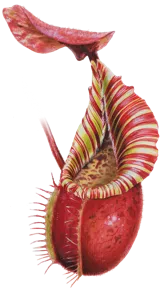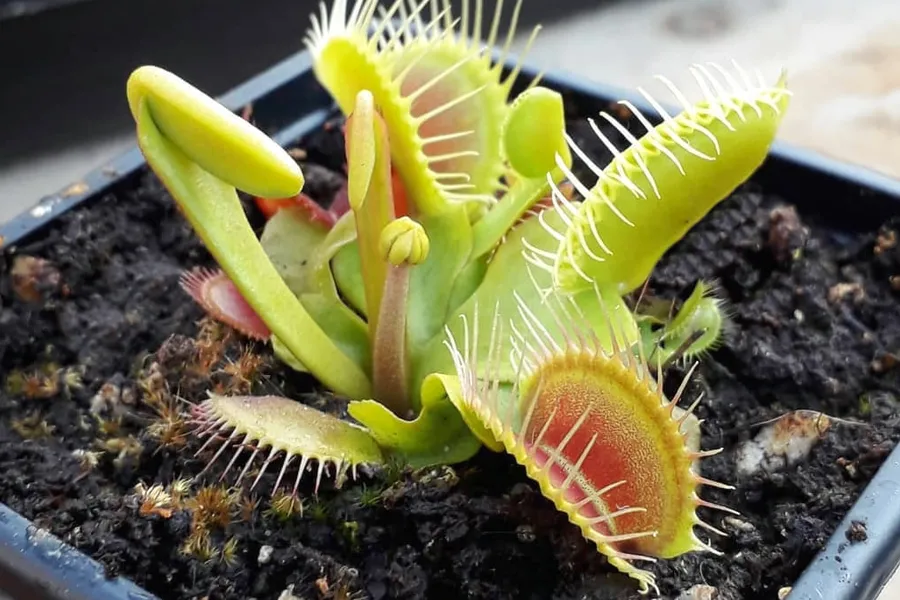Short answer: probably not. Cutting off the flower stem as soon as you spot it will encourage your plant to put its energy into vegetative growth (i.e. more big traps).
But that’s not to say you should never let your plant flower. What’s more, even if you do cut off the flower stem, there’s a simple technique you can use to turn it into more Venus flytraps. To learn more, read on…
Why is my Venus flytrap flowering?
The Venus flytrap - or Dionaea muscipula, to use its scientific name - is a flowering perennial which blooms every Spring once mature. It flowers to produce seed, as a way to reproduce, so rest assured that this is a completely normal process. That said, contrary to what you might read online, flowering does not necessarily mean your Venus flytrap is healthy. Plants that are really struggling can sometimes throw their last bit of energy into flowering.
You might be tempted to let your Venus flytrap flower, and perhaps collect and sow seed, to get more Venus flytraps. However there are a number of reasons I advise against this unless you are a very experienced grower:
- Venus flytraps are not easy to propagate from seed. The seeds take a long time to germinate and it will be many years before you have any large plants. Plus, seed produced via self-pollination won’t be as vigorous as seed produced via cross-pollination, so you’ll need two flowering plants for best results.
- There are easier ways to multiple your Venus flytraps. Propagation via seed is difficult. It’s much easier to divide your adult plant, or propagate from a flower stem (more on that later!)
- Venus flytrap flowers are not particularly attractive. I mean, look at them. They’re just small white flowers. Compared to the traps, they don’t have a huge amount going for them.
- Flowering can exhaust a Venus flytrap. This is the big one. If a Venus flytrap is already struggling due to suboptimal growing conditions, flowering can sometimes weaken them to a point from which they’ll struggle to recover.
Click on any photo to zoom in. Use arrow keys or swipe to navigate.
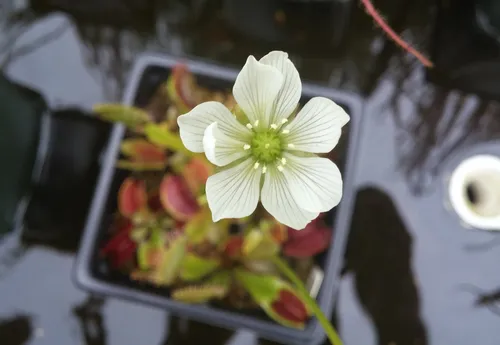 1. Venus Flytrap (Dionaea muscipula flowers
1. Venus Flytrap (Dionaea muscipula flowers 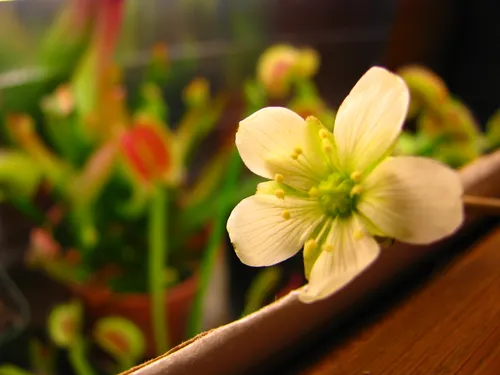 2. Venus Flytrap (Dionaea muscipula flowers.
2. Venus Flytrap (Dionaea muscipula flowers. So, my recommendation is to snip out the flower stalk as soon as you see it. Use a pair of sharp scissors to cut it off as close to the base as possible.
Doing so will ensure that your plant puts its energy towards trap production, and may help counteract the negative effects of any cultivation mistakes. Speaking of which, if you’d like to learn about their ideal light, water, and temperature requirements then check out my Venus flytrap growing guide.
How to propagate Venus flytraps from cut flower stalks
Once you’ve chopped your flower stems, don’t throw the pieces away! With a bit of effort it’s possible to propagate the stem into entirely new plants, without going through the hassle of producing seed. The process is similar to that of taking a leaf pulling. In short, we’re going to be planting pieces of cut flower stem into clean soil and keeping them warm and humid until they can sprout roots and leaves.
The excellent photos below, courtesy of Ralph from the Canadian Carnivorous Plant society, are a great illustration of the process.
Click on any photo to zoom in. Use arrow keys or swipe to navigate.
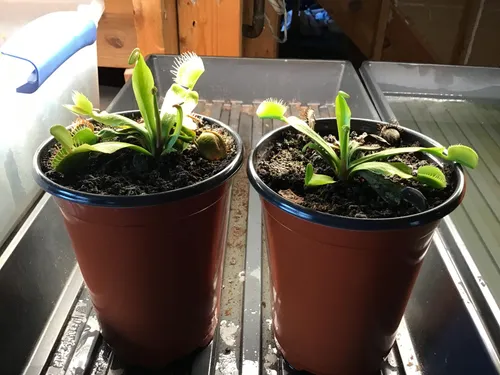 1. Venus flytrap flower stems, ready to snip.
1. Venus flytrap flower stems, ready to snip. 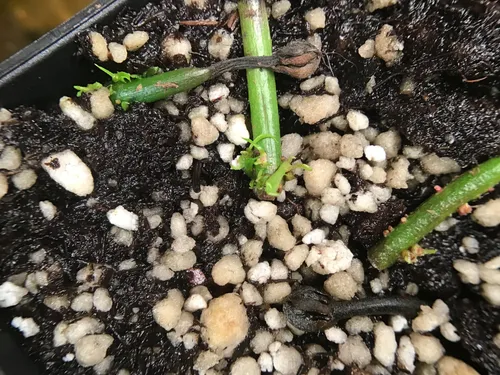 2. Venus flytrap plantlets emerging from the cut stems, several months later!
2. Venus flytrap plantlets emerging from the cut stems, several months later! 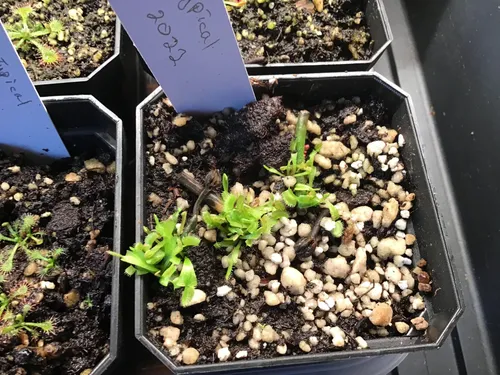 3. Venus flytrap plantlets rapidly gaining size.
3. Venus flytrap plantlets rapidly gaining size. 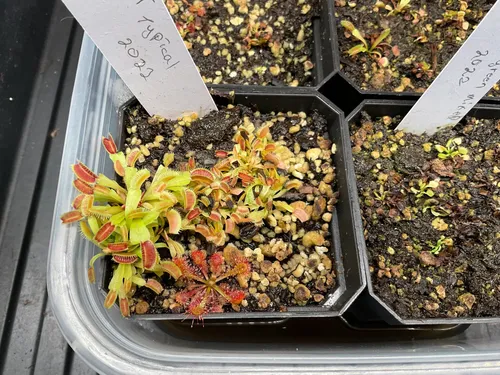 4. Small Venus flytraps, ready to be divided and potted up.
4. Small Venus flytraps, ready to be divided and potted up. The general process is as follows:
- Prepare your media. I’ve had the most success using equal parts washed peat moss and perlite. Mix these ingredients together with enough pure water (distilled / dionised is best) to make a wet soil.
- After letting it soak, squeeze as much water as you can out of the mixture. At this point you may want to microwave it, to kill any spores or pests which might hamper your efforts. This is optional, but I’ve found media sterilisation to be very helpful when taking cuttings (or sowing Nepenthes seed, for that matter!).
- Once your soil is cooled and ready in a pot, cut each stalk into 3/4cm pieces. Lay the pieces down on the soil, and gently cover the cut ends with a little bit of soil.
- Place the pot in a bright spot (out of direct sun) and wait. You’ll want to keep the pot warm and humid - a seedling heat mat and a dome are helpful here. In a couple of months, you should see little plantlets sprouting out of the stems at the point they’re in contact with the soil.
Why would a Venus Fly Trap flower in winter?
This is generally not a good sign. If your growing conditions are very different from this plant’s natural habitat, then they can flower at any time of year. A key part of maintaining a healthy plant is to respect their natural winter dormancy requirements. This keeps them ‘in sync’ with the seasons.
If you’re not providing them with sufficient light (remember, Venus flytraps like full direct sun) or not giving them enough water (Venus flytraps are bog plants!) it’s possible that your flytrap may flower as a last-ditch attempt to save itself. If this happening, cut the flower stalk immediately and change your growing conditions to better reflect their natural habitat. Feeding your flytrap should not be a priority - proper light, water, and temperature are far more important for successful cultivation.
Where can I learn more?
To start, I’d recommend checking out my Complete Guide to the Venus Flytrap. This will tell you everything you need to know in order to successfully cultivate Venus flytraps.
Alternatively if you’d like a printed guide, the single best book for growers of carnivorous plants is Peter D’Amato’s The Savage Garden. It’s available for next-day delivery here on Amazon.
